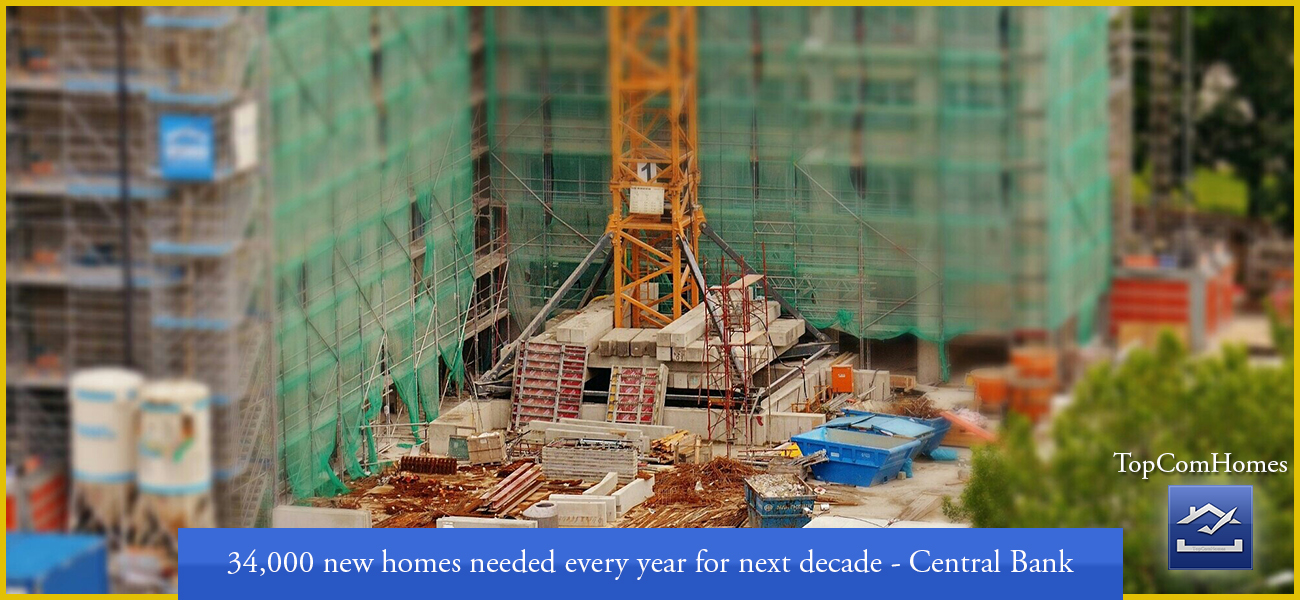
Ireland's Property News
34,000 new homes needed every year for next decade - Central Bank
34,000 new homes needed every year for next decade - Central Bank.
A study from the Central Bank has found that 34,000 new dwellings will be needed each year for the next decade to keep up with demand.
The demand for housing comes from a natural increase in the population and more people coming to live in the country.
At the peak of the boom in 2006, 93,000 housing units were built.
But following the crash, house construction collapsed and between 2011 and 2014 an average of just 5,500 houses a year were built.
But the population did not stop growing during those years.
Today's study from the Central Bank found that in order for housing to have kept up with the growth in the population, around 27,000 dwellings per year would have had to be built in the past eight years from 2011 until 2019.
However, the average housing completion rate for this period was just 10,500 dwellings a year.
Since 2016, the recovery in the economy has also meant more people are returning to Ireland and more people from abroad are coming to live here. This accounts for around a third of housing demand.
The Central Bank study shows that from the years 2006 to 2011, the overall population grew by 348,000 with 122,000 or just over a third from net inward migration.
After the crash - between the years 2011 and 2016 - 25,000 people left the country but the population kept growing, adding 175,000 people.
When the economy picked up again from 2016, the numbers coming into the country also went up.
Between 2016 and 2019, it is estimated there was net inward migration of 104,000 with the population overall increasing by 182,000.
The current population stands at 4.922 million. In 2006, it had stood at 4.233 million.
Source : RTE.ie 11/12/2019

Comments